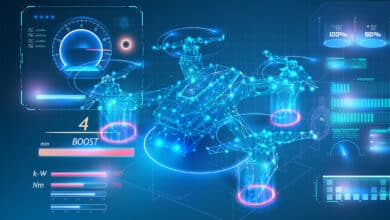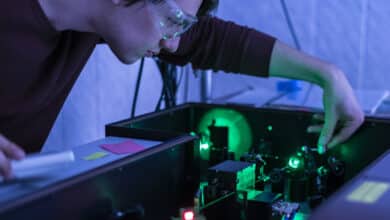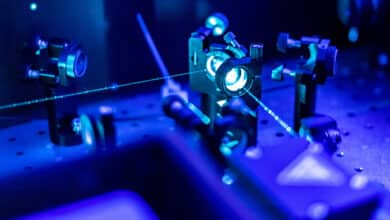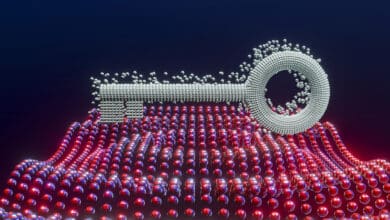AI and Quantum Sensing: A Perfect Synergy
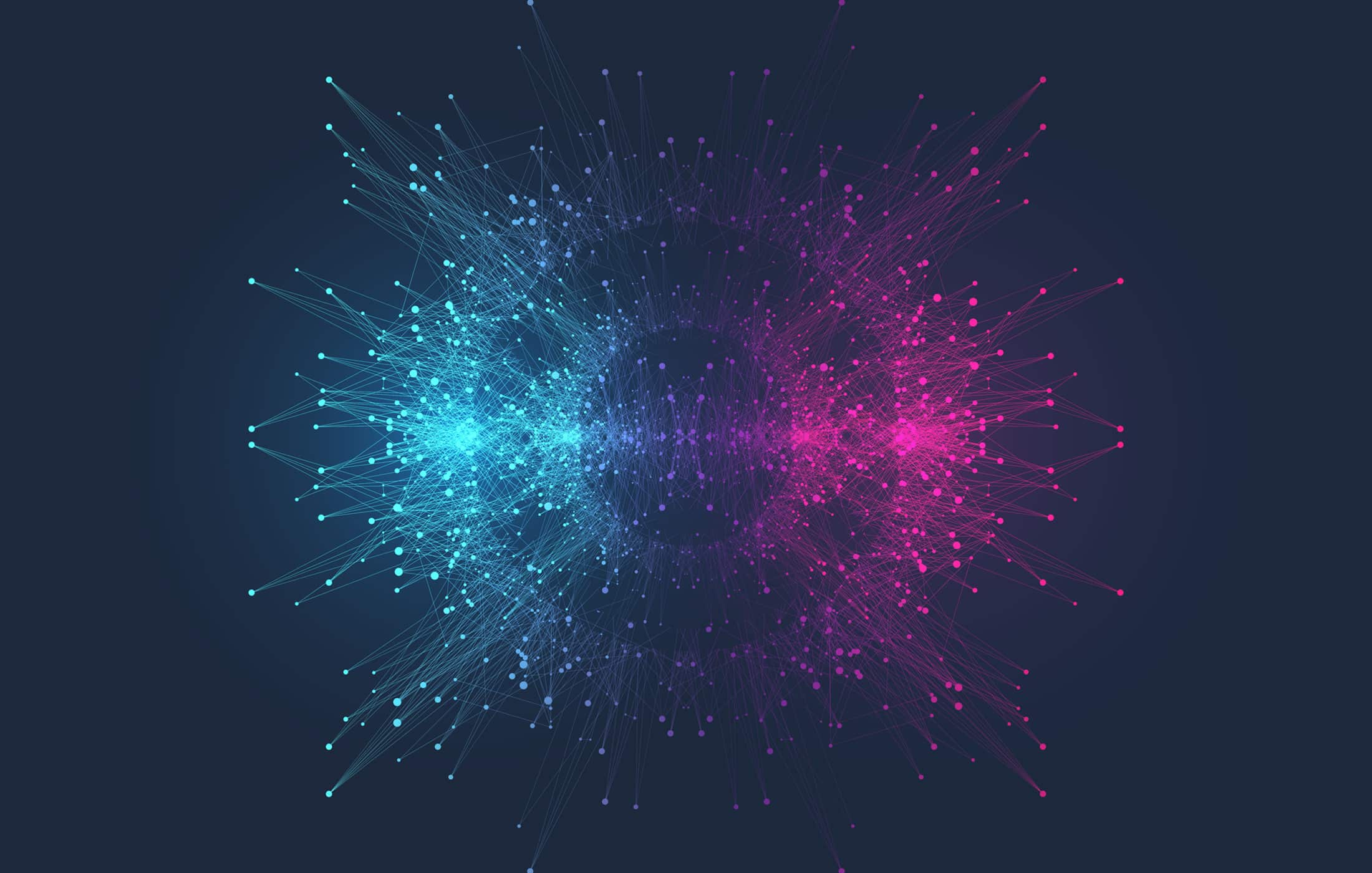
The marriage of artificial intelligence and quantum sensing is a natural synergy – each amplifies the other’s strengths. Quantum sensors can flood us with high-precision data about the world, but making sense of that data isn’t trivial. The signals are often high-dimensional, noisy, and complex, reflecting the subtlety of quantum-level phenomena. This is where AI steps in. Advanced algorithms (machine learning, neural networks, deep analytics) excel at finding patterns in vast data and extracting meaningful information. By pairing AI with quantum sensing, we ensure that we don’t just collect quantum data – we understand it and act on it.
In fact, AI is becoming essential for handling quantum sensor outputs. While a quantum magnetometer or gravimeter might detect tiny fluctuations, interpreting what those fluctuations mean (a hidden tumor? a submarine? a new physics signal?) can be like finding a needle in a haystack. AI can be trained to recognize the subtle fingerprints of true signals amid background noise. Below are several ways AI supercharges quantum sensing, along with the exciting prospects this synergy unlocks:
Intelligent Noise Reduction
Quantum sensors are so sensitive that they pick up everything – including unwanted environmental noise (stray magnetic fields, vibrations, temperature drifts). Traditionally, we had to build elaborate shielding or operate in isolated labs to reduce interference. AI offers a smarter solution: noise mitigation algorithms can learn the difference between a sensor’s target signal and noise, and filter the noise out in real time. For example, AI models have been used to clean up MRI images enhanced by quantum sensors, removing artifacts that would normally require a shielded room. SandboxAQ (an Alphabet spinoff) reports using AI to distinguish the useful magnetic signals of the human heart from background electromagnetic noise, instead of relying solely on cumbersome shielding. By digitally “hushing” the noise, we can deploy quantum sensors in everyday environments – a quantum gravimeter on a field survey, a quantum brain scanner in a hospital – without losing fidelity. The result is smaller, more practical quantum devices that achieve the same signal-to-noise ratio as large isolated setups. In short, AI becomes the noise-cancelling headphones for quantum sensors, enabling crystal-clear detection of the faintest signals.
Pattern Recognition and Anomaly Detection
The data streams from quantum sensor networks can be bewilderingly complex. AI shines at finding patterns in big data and flagging anomalies. When you have dozens of quantum sensors monitoring, say, an entire power grid’s magnetic fields or a patient’s vital signs, AI can correlate and interpret this multi-sensor data far faster than any human. Machine learning can extract key features from large, noisy quantum datasets and generalize this knowledge to new inputs – essentially learning what “normal” looks like and what deviates from it.
This has huge implications: in healthcare, AI can analyze quantum sensor data (like a real-time magnetic map of brain activity or heart rhythms) to detect early signs of disease that a doctor or classical device might miss. In finance or cybersecurity, quantum random number generators produce data that AI can monitor for anomalies (ensuring true randomness for encryption). One dramatic example of AI’s power: Researchers used AI to transform complex magnetic field maps from quantum sensors into actionable medical insights – mapping cardiac electrical activity for arrhythmia diagnosis. Another team uses AI with quantum sensors for navigation, matching a plane’s measured magnetic map to known Earth magnetic anomalies, achieving GPS-free navigation accurate to within meters.
These feats are possible only because AI can digest the firehose of data from quantum sensors and pull out the signal (a heartbeat pattern, a location fix) that matters. As quantum sensors proliferate, AI acts as the brain that interprets the senses, spotting the meaningful patterns and rare events automatically.
Real-Time Optimization and Sensor Control
Designing and deploying quantum sensors is an incredibly complex task – there are many parameters (laser frequencies, trapping fields, sensor placements) that must be tuned perfectly. AI, especially reinforcement learning and evolutionary algorithms, can assist in the optimization of sensor systems. For instance, engineers have begun using AI to optimize the configuration of multi-sensor quantum networks for maximum coverage and minimal noise. An AI might figure out how to arrange a dozen quantum gravimeters across a landscape to get the best 3D map of subterranean structures, or how to dynamically adjust a quantum radar’s settings in response to the environment.
In the lab, researchers demonstrated using AI to improve quantum sensor calibration – one team used a neural network to automatically calibrate a quantum microscope’s many control knobs far faster than a human expert could.
AI can even aid the design of the sensors themselves: by exploring a vast design space (materials, geometry, operating conditions) in simulation, machine learning algorithms have proposed novel sensor designs that outperform conventional ones. This kind of AI-driven design is crucial as quantum sensors move from lab prototypes to field-ready devices. It helps answer questions like: how can we maintain an atomic clock’s stability outside the lab? Or, what is the optimal laser pulse sequence to get the highest sensitivity from an atom interferometer? AI can crunch through these possibilities and deliver solutions that human intuition might overlook, speeding up innovation in quantum hardware.
Enabling Unprecedented Discoveries
Perhaps the most exciting aspect of combining AI with quantum sensing is the unknown — the possibility of discovering phenomena we’ve never seen before. As AI-guided quantum sensors become more common, we might deploy vast sensor networks: imagine adaptive, AI-directed arrays of quantum sensors spread across Earth (or the solar system), all feeding data into a smart analysis hub. Such a system could sniff out extremely subtle signals: for example, correlating slight geomagnetic changes across continents to predict earthquakes earlier than ever, or detecting the minute precursor signals of a volcanic eruption. In astronomy, AI-enhanced quantum telescope sensors could sift through noisy cosmic data to find hints of new particles or even technosignatures of extraterrestrial life. AI-assisted quantum imaging is another futuristic prospect – we could see deeper into tissue or farther out in space by having AI reconstruct images from sparse quantum sensor data, surpassing classical resolution limits.
There’s also a beautiful symmetry in AI + quantum: AI algorithms themselves can run on quantum computers in the future, and quantum computers will need quantum sensors for error correction – an intertwining advancement. Looking ahead 10 or 20 years, we might credit an AI–quantum sensor hybrid for a Nobel-worthy discovery, like detecting the first signs of dark matter or monitoring the Earth’s climate systems with enough fidelity to steer geoengineering efforts. By fusing the intelligence of AI with the sensitivity of quantum sensors, we’re effectively creating a cybernetic sensing organism for humanity – one with superhuman perception and the ability to learn and adapt.
Summary
AI and quantum sensing complement each other perfectly. Quantum sensors provide the rich, nuanced data about physical reality at its smallest scales; AI provides the means to interpret and act on that data in real time. This synergy is already evident in cutting-edge projects – from AI algorithms cleaning up quantum microscope images to autonomous navigation systems using quantum sensors plus AI to chart their course. As both technologies mature, their convergence will enable a new class of applications that neither could achieve alone. We will see quantum sensors moving out of shielded laboratories into the messy real world, guided by AI to remain effective amid chaos. We’ll also see AI systems gaining “sensory organs” that reach fundamentally new levels of precision, letting them perceive things like magnetic fields of single neurons or the gravitational tug of underground water. The potential for scientific breakthroughs is immense – AI might help quantum sensors find evidence of new physics, or map brain activity in ways that revolutionize neuroscience. And the real-world impact will range from safer transportation and better healthcare diagnostics to more secure communications and more precise climate data. It’s a future where our tools not only measure more than ever before, but also understand what they measure – a future where we extend our perception through quantum technology, and leverage AI to glean wisdom from the quantum data deluge. In a very real sense, AI-powered quantum sensing could become humanity’s new superpower in observing and shaping the world.
Quantum Upside & Quantum Risk - Handled
My company - Applied Quantum - helps governments, enterprises, and investors prepare for both the upside and the risk of quantum technologies. We deliver concise board and investor briefings; demystify quantum computing, sensing, and communications; craft national and corporate strategies to capture advantage; and turn plans into delivery. We help you mitigate the cquantum risk by executing crypto‑inventory, crypto‑agility implementation, PQC migration, and broader defenses against the quantum threat. We run vendor due diligence, proof‑of‑value pilots, standards and policy alignment, workforce training, and procurement support, then oversee implementation across your organization. Contact me if you want help.
